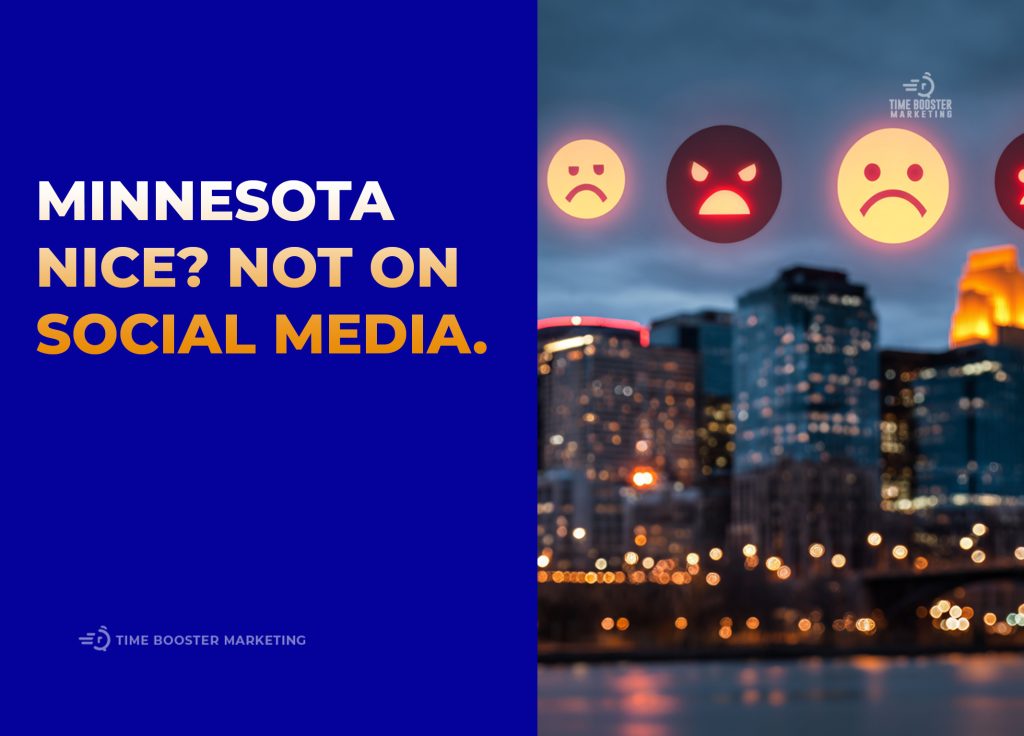If you run a food or beverage business in Minnesota, you know that staying ahead of the curve is essential. Consumers are more informed, health-conscious, and socially aware than ever, and their preferences are constantly evolving. That’s why understanding the latest Marketing Trends in Minnesota is crucial if you want your brand to thrive in 2025.
From craft breweries to farm-to-table restaurants, local brands are competing not just on quality but on how well they connect with customers. Sustainability, digital innovation, and community engagement are no longer buzzwords, they’re expectations. By learning how to align your marketing strategies with these shifts, you can increase loyalty, attract new customers, and grow your bottom line.
In this guide, we’ll explore the top trends shaping Minnesota’s food and beverage industry, backed by real-world examples, actionable strategies, and insights from industry leaders. Whether you’re looking to refine your social media campaigns, highlight local sourcing, or leverage data for smarter marketing, this article gives you the tools to succeed in a competitive market.
Minnesota’s food and beverage industry is experiencing a transformative shift in 2025. As consumer preferences evolve, businesses are adopting innovative marketing strategies to stay ahead. From sustainability initiatives to digital marketing advancements, understanding these trends is crucial for success in the competitive Minnesota market.
Marketing Trends in Minnesota’s Food and Beverage Industry
1. Embracing Sustainability in Marketing

Sustainability has become a cornerstone of marketing strategies in Minnesota’s food and beverage sector. Consumers are increasingly prioritizing eco-friendly practices, prompting businesses to highlight their sustainability efforts.
Key Strategies:
- Eco-Friendly Packaging: Brands are opting for biodegradable or recyclable packaging to reduce environmental impact.
- Local Sourcing: Emphasizing locally sourced ingredients supports regional farmers and reduces carbon footprints.
- Transparency: Companies are providing clear information about sourcing and production processes to build consumer trust.
By integrating sustainability into their marketing, businesses not only appeal to eco-conscious consumers but also contribute positively to the environment.
2. Leveraging Digital Marketing Innovations
Digital marketing continues to evolve, offering new opportunities for food and beverage brands in Minnesota.
Emerging Trends:
- Social Media Engagement: Platforms like Instagram and TikTok are pivotal for showcasing products and engaging with younger audiences.
- Influencer Partnerships: Collaborating with local influencers helps brands reach targeted demographics effectively.
- Online Ordering Systems: Implementing user-friendly online ordering platforms enhances customer convenience and boosts sales.
Adopting these digital marketing strategies enables businesses to connect with consumers in meaningful ways and drive growth.
3. Capitalizing on Local Sourcing and Community Engagement
Minnesota consumers show a strong preference for locally sourced products, influencing marketing approaches.
Effective Tactics:
- Highlighting Local Partnerships: Showcasing collaborations with local farmers and producers resonates with community values.
- Participating in Local Events: Engaging in farmers’ markets and food festivals increases brand visibility and fosters community relationships.
- Storytelling: Sharing the journey of local ingredients from farm to table creates a compelling narrative that attracts consumers.
By focusing on local sourcing and community involvement, businesses can build strong, loyal customer bases.
4. Adapting to Health and Wellness Trends
Health-conscious consumers are driving demand for products that align with their wellness goals.
Marketing Approaches:
- Nutritional Transparency: Providing detailed nutritional information helps consumers make informed choices.
- Promoting Health Benefits: Highlighting the health advantages of products, such as low sugar or high protein content, appeals to health-focused individuals.
- Offering Dietary Options: Catering to various dietary needs, like gluten-free or plant-based, broadens market reach.
Aligning marketing messages with health and wellness trends positions brands as trusted choices for health-conscious consumers.
5. Utilizing Data-Driven Marketing
Data analytics plays a pivotal role in shaping effective marketing strategies.
Implementation Strategies:
- Consumer Behavior Analysis: Understanding purchasing patterns allows for personalized marketing efforts.
- Campaign Performance Tracking: Monitoring the success of marketing campaigns helps refine strategies for better results.
- Market Trend Identification: Analyzing market data enables businesses to anticipate trends and adjust marketing approaches accordingly.
Leveraging data-driven insights ensures that marketing efforts are targeted and effective, leading to improved outcomes.
Conclusion
The food and beverage industry in Minnesota is poised for significant growth in 2025. By embracing sustainability, leveraging digital marketing innovations, focusing on local sourcing, adapting to health trends, and utilizing data-driven strategies, businesses can navigate the evolving market landscape successfully.
Embrace sustainability, harness digital tools, engage with your local community, prioritize health-conscious offerings, and utilize data analytics to drive growth. Adaptation and innovation are key to thriving in Minnesota’s dynamic food and beverage industry.






